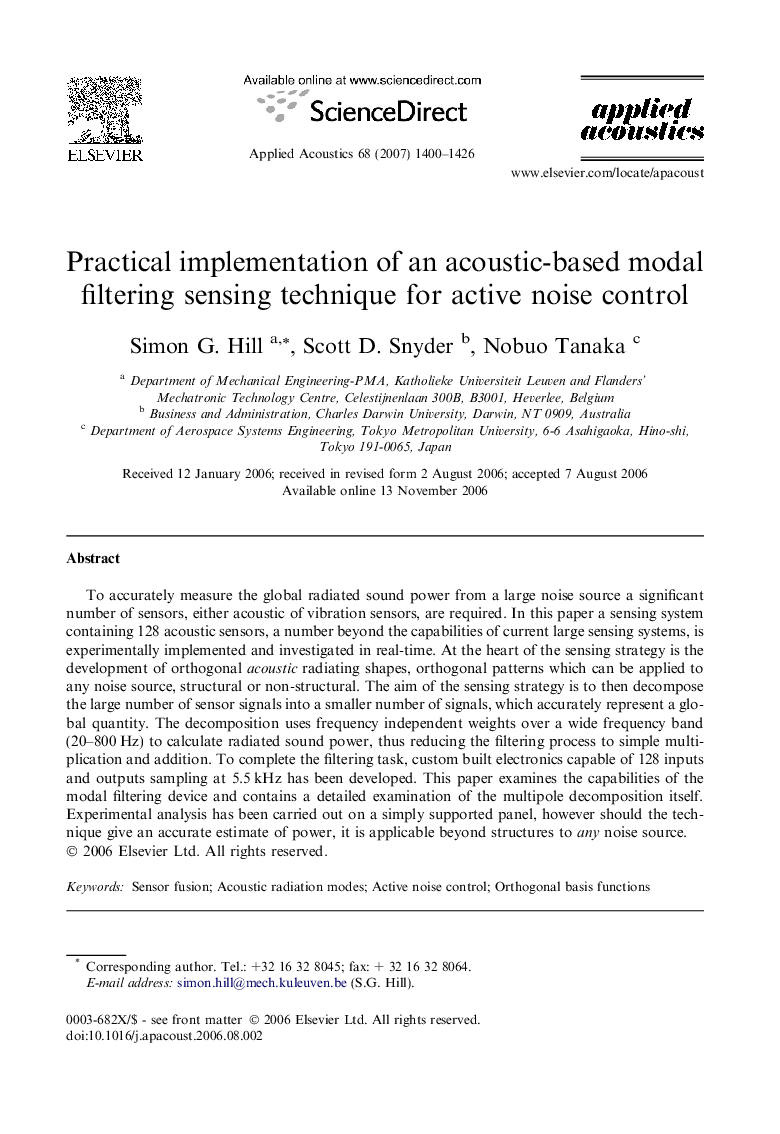| Article ID | Journal | Published Year | Pages | File Type |
|---|---|---|---|---|
| 755420 | Applied Acoustics | 2007 | 27 Pages |
To accurately measure the global radiated sound power from a large noise source a significant number of sensors, either acoustic of vibration sensors, are required. In this paper a sensing system containing 128 acoustic sensors, a number beyond the capabilities of current large sensing systems, is experimentally implemented and investigated in real-time. At the heart of the sensing strategy is the development of orthogonal acoustic radiating shapes, orthogonal patterns which can be applied to any noise source, structural or non-structural. The aim of the sensing strategy is to then decompose the large number of sensor signals into a smaller number of signals, which accurately represent a global quantity. The decomposition uses frequency independent weights over a wide frequency band (20–800 Hz) to calculate radiated sound power, thus reducing the filtering process to simple multiplication and addition. To complete the filtering task, custom built electronics capable of 128 inputs and outputs sampling at 5.5 kHz has been developed. This paper examines the capabilities of the modal filtering device and contains a detailed examination of the multipole decomposition itself. Experimental analysis has been carried out on a simply supported panel, however should the technique give an accurate estimate of power, it is applicable beyond structures to any noise source.
